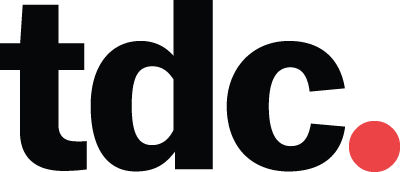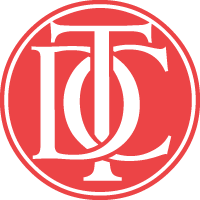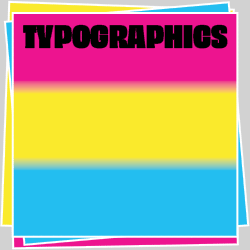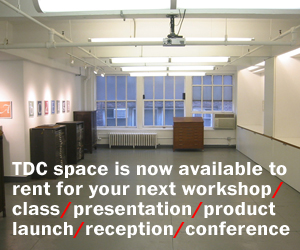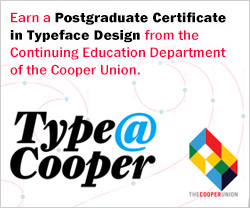TDC62 & TDC2016 Judges Choices and Opening Reception
We invite ours members, their honorees, and the press to attend a private showing of our 62nd annual typography exhibit, TDC62, and annual typeface design competition, TDC 2016 on July 12th, 2016. This will be an evening of celebration as the Club reveals the winning work of this year’s prestigious competition, Judges Choice’s, announce the Best in Show, Best in Show Student Awards and Scholarship presentations. The Club is honored to be presenting the the 29th TDC Medal to Emigre (Zuzana Licko and Rudy VanderLans).
Every year, the eleven TDC competition judges choose a favorite from all the entries. These standouts are highlighted in the annual and we are featuring the TDC62 and TDC2016 competition judges choices below.
TDC62 COMMUNICATION DESIGN JUDGES CHOICES
DARHIL CROOKS
Judge’s Choice: Elephant Magazine
As an editorial creative director, I come across something every once in a while that stops me in my tracks. Something that makes me say, “Damn, I wish had done that.” Well, maybe more than every once in a while …
Elephant magazine by Atlas Studio is one of those projects.
It wasn’t a hard decision. The only hard part was deciding which issue to pick. Each one balanced confidence, restraint, and excitement at the same time. The mastery of the grid on each page takes the reader from quiet, front-of-the-book type to beautifully kerned, bold letterforms that take up an entire page … and back again—all of this while doing an amazing job showcasing the best in art culture without distraction.
It’s all done with only a handful of fonts and basically in black and white. There’s nothing flashy or gimmicky here. From the TOC to the back page, it’s editorial design in its purest form.
- Design: Nuria Cabrera, Giovanni Cavalleri, Pablo Martín, Rafa Roses, and Astrid Stavro
- Art Direction: Pablo Martín and Astrid Stavro
- Editor in Chief: Marc Valli
- Design Firm: Atlas
- URL: designbyatlas.com
- Client: Frame Publishers
- Principal Type: Founders Grotesk and Plantin
SAGI HAVIV
Judge’s Choice: Finding Freedom, book jacket
Often, the most direct and obvious solution is the best one. This is the case with the design for Finding Freedom, which features poems of former inmates. Superimposing the handwritten pages on top of beautiful black-and-white portraits creates an interesting and provocative interaction between word and image—a rich expression through simple juxtaposition.
- Design: Rob Schelleberg
- Design Direction: Alisa Wolfson
- Creative Direction and Editor: Brandon Crockett
- Chief Creative Officer: Mark Tutssel
- Executive Director of Production: Vincent Geraghty
- Executive Producer: Juan Woodbury
- Producer: Lisa Kunst
- Photography: Sandro Miller
- Creative: Matt Miller
- Agency: Leo Burnett Chicago
- Client: St. Leonard’s Ministries
- Principal Type: Founders Grotesk
ROBIN SCHIFF
Judge’s Choice: Mito, exhibition
As a longtime book jacket designer, familiar with working in historical contexts, I was drawn to the modernist look of the Mito exhibit graphics as they appeared on the table as a page-size photo. The document of the exhibit resembles, at first glance, a collage of the red, black-on-cream graphics of a Bauhaus-era poster. A closer look, however, reveals a cohesive design of printed materials interacting with surfaces in all dimensions of the lobby of Columbia’s Library of Congress. The content of the exhibit is Mito, a publication and intellectual forum for progressive ideas from 1955–1968. The bold execution is almost entirely typographic.
The centerpiece and focal point of the room is a sculptural rendering of the name “Mito,” whose individual letterforms act as desk furniture as well as logo and headline for the exhibit. The huge red sans serif sculpture defines the space and creates the scale for the room. This, along with the continuously printed floor and walls, creates the illusion of the viewer having been shrunk to fit inside text.
The painted columns, empty doorways, and gridded windows are all considered and form the architecture as well as the texture of the exhibit. Pages from the magazine’s archives, with lists of its contributors, excerpted writings, and timelines of its history, form a continuous wall and floor of text. The library’s banisters, floor moldings, and shelf railings outline and define the planes and serve as rules, panels, and accents to the larger “pages” created by the exhibit’s walls and floors of text.
The ambitious concept of the exhibit as an homage to the magazine’s forum of ideas is loyal to Mito’s mission, and is an elegant tribute to its place in the cultural history of its country. The Library of Congress is the perfect venue.
- Design and Creative Direction: Cristina Achury and María Silva
- Content: National Library of Colombia
- Print Production: Signgraphic
- Carpentry: William Enrique Cubillos and Emilia Moncada
- URL: null.com.co
- Design Studio: Null
- Client: Ministry of Culture of Colombia
- Principal Type: Bodoni, Bodoni Old Face, and Franklin Gothic Std
JARIK VAN SLUIJS
Judge’s Choice: Aperture, magazine
A couple of years ago, Aperture magazine went through a thoughtful and beautiful redesign worthy of its heritage, and the use of outstanding typography was key. I’m obsessed with photography, love typography, and always appreciate a good system, so picking this entry was easy, if not a little biased. For me, every new issue is an instant object of desire.
At the core of the relaunch was a smart and flexible typographic system used to structure the issues into two main sections. The “Words” section uses a serif typeface, and the “Pictures” section a geometric sans serif. The sections use different paper stocks as well, creating differing tactile and visual experiences.
Through consistently strong and disciplined art direction, all issues have maintained the same level of elegance, intelligence, and beauty. The design is both classic and modern, and at first glance, deceptively simple. The oversized pages, modernist grids, and ample use of white space create the perfect conditions to showcase photography. Although these ingredients can easily result in a bland and derivative design, it is the custom typefaces that give a distinctive character to the magazine. This type family doesn’t shy away from having a playful and decorative side, which helps to create a unique voice for the publication. And take a look at the cover of the “Interview” issue—a photography magazine with no photo on its cover and relies solely on type. Brilliant.
That said, the typography never gets in the way of the photographic content, and neither does the tastefully small Aperture nameplate on the cover.
There are magazines you throw away. This is not that type of magazine.
- Art Direction and Typography: Henrik Kubel and Scott Williams
- URL: a2swhk.co.uk / a2-type.co.uk
- Design Firm: A2/SW/HK
- Client: Aperture
- Principal Type: Aperture Sans and Aperture Serif
KAREN WELMAN
Judge’s Choice: Nike, Baseball bat
I chose the laser-etched baseball bat, not only because it’s an unusual physical object, but also because it’s an incredibly clever idea in the context of it being a trophy for Nike.
The baseball bat is already an aesthetically beautiful object, but to add to it the most gorgeous typography and calligraphy to further enhance its beauty is a very simple and elegant solution that makes a statement about sport and winning.
The design has moved typography away from its usual association with paper, books, and screens—and was even etched onto a surface that was supposedly impossible to laser. I love it when a designer breaks the rules, produces something beyond the realms of the expected, and breaks new ground with a successful implementation.
A stunning result.
- Design and Lettering: Kevin Cantrell and Juan Carlos Pagan
- Art Direction: Kevin Cantrell
- Creative Direction: John Moon (Nike)
- Production: Big Secret
- URL: kevincantrell.com
- Twitter: @kevinrcantrell
- Design Studio: Kevin Cantrell Studio
- Client: Nike
- Principal Type: Custom
FOREST YOUNG
Judge’s Choice: AIA Heritage Ball, invitation
The invitation to the AIA Heritage Ball 2015 is a viscerally compelling artifact. The memorable soloist here is a bespoke typeface appropriately named Herita-Geo. This piece commanded a judges’ choice as it was both a sharp concept expressed effortlessly through typographic form, and a confident embodiment of homage, contemporaneity and experimentation.
The letterforms expand and contract, playfully evoking sentiments of spatial adaptability and flux. The typeface’s double line structure mimics the walls in plan and section views from architectural blueprints. The typographic impression carries inflections of geometric sans predecessors like Bayer’s Bauhaus letterforms, the concentric striping of Radim Peško’s Boymans and the the elasticity of Experimental Jetset’s responsive W for the Whitney Museum.
The piece is also surprisingly comedic, echoing contemporary GIF culture and typographic memes. Like Archigram’s A Walking City, provocation does not need to be exclusively serious. Overall, the invitation eschews telegraphic legibility in favor of narrative. It is refreshing to be reminded that professional design can be a series of playful public experiments.
- Design: Joseph Han, Jang Hyun Han, Sue Lee, and Maurann Stein
- Art Direction: Natasha Jen
- URL: pentagram.com
- Twitter: @pentagram
- Design Firm: Pentagram
- Client: AIA New York
- Principal Type: Herita-Geo
JULIA ZELTSER
Judge’s Choice: Poster
As a judge in a design competition, I have a split second to decide whether the work is award-winning. I have to rely on instinct, experience, and design knowledge to make an instant judgment call. In the sea of great designs of varying complexity, the poster “Upside Down” stood out because of its clarity.
After reviewing hundreds of great submissions, I was struck and inspired by the poster for an artist exhibition “As if I became upside down, right side up.” The designer chose to represent the work of the artist with a blank sheet of paper—an everyday object that you and I may toss around our desks, turn and flip, bend, and write on. The sides of the folded edges offered just the necessary information—artist name, show title, and dates.
The round, geometric, straightforward characteristics of Eesti, from Grilli type, mimicked the simplicity of the composition. The text is tilted on an angle, falling, and bleeding off—illustrating “upside down, right side up.” Yet, no vital information is lost. The hard, triangular edges form a daring composition. The rest is white space. Simple, unapologetic, confident, striking white space. This basic principle of design not only cut through the day-to-day clutter, but also was a breath of fresh air for me during the judging.
- Design: Stefan Guzy and Björn Wiede
- URL: zwoelf.net/portfolio
- Studio: Zwölf
- Client: Kunstverein Harburger Bahnhof
- Principal Type: Eesti
TDC 2016 TYPEFACE DESIGN JUDGES
VERONIKA BURIAN
Judge’s Choice: Tremolo
In general I am not a big fan of gradients but this type family struck me as different. By way of interlocking jags they elegantly give depth to the letters and emphasise their playfulness. The design also displays a joy to experiment, strong quality of drawing skills and a deep understanding of shapes. Nikola Djurek manages to surprise us by giving to an otherwise stiff blackletter style this somewhat cheeky and frivolous tone, which works surprisingly well even in smaller text sizes.
If I may criticise one thing though, than it is the decision to use upright caps in the italic. Surely it is the designers’ prerogative to do so, but i feel that the obvious imbalance of weight and spacing are not fully justified here.
The Tremolo type family has 11 individual fonts, but actually only 2 different weights and those sit at two extreme ends. Obviously the designer’s intention when assembling the family was another than the classic Light to Heavy. I appreciate this approach to question the usual family tree and concentrate on the usage instead.
Tremolo certainly is an interesting addition to the current trend of polychrome typeface.
- Typeface Design: Nikola Djurek
- Foundry: Typonine Ltd.
- URL: typonine.com
- Members of Type Family: Text, Text Italic, Stencil Text, Stencil Text Italic, Display, Stencil Display
STEPHANE ELBAZ
Judge’s Choice: BC Mikser
The mono-space style conveys a “machine” aesthetic that is recognizable by its reliance on visible technical constraints. Each character of the alphabet maintain the exact same width. From a practical stand point, one could find any “mono” totally useless; it is, after all, a design that displays functionalism solely for aesthetic reasons. These constraints are based on functional limitations that no longer exist, and aside from the inherent alignment-maniacs that are computer engineers or the tacky interfaces in sci-fi movies, only designers keep their crush’s on these peculiar shapes.
This style is historical and persistent. The most respected to the trendiest type foundries, propose new mono typefaces every year to meet visual designers’ perpetual demands. Going back to the early 20th century, one finds a variety of ‘typewriter’ typefaces in printers specimens.
Remember that Gutenberg invented typography as a technology and not as some new ‘art’ of the text. As its design evolved into an art form, it never lost its intimate connection with technology; ‘Monos’ might be the clearest incarnation of this relationship. Whereas in the past, mono design related to mechanization, today it relates to computerization.
The world needed to see the mono version of the Helvetica — isn’t this the founding moment of modern type history? — but Mikser is not just a mono and it’s definitely not a mono version of something else. This alphabet embraces the mono aesthetic while pushing it further. Without trading the craft and the readability, it manages to integrate something that relates to pop culture. Expressive shapes encapsulated in very limiting containers side by side and displaying a smirk as a whole, like an ironic wink representative of our time.
- Typeface Design: Filip Kraus
- Foundry: Briefcase Type Foundry (CZ)
- URL: briefcasetype.com
- Twitter: @BriefcaseType
ALEXANDER TOCHILOVSKY
Judge’s Choice: Mornic
- Designer: Nur Muhammad Hasif
- Twitter: @nrmdhsif
PETR VAN BLOKLAND
Judge’s Choice: Bressay
Where family designs often lack the completeness of different designs for small and large sizes, Bressay does offer this choice, which makes it a complete alternative for other existing “expansion” typefaces. Expansion is Gerrit Noordzij’s model name for contrast types that follow writing with the pointed flexible pen: pressure on the pen makes the width of the downstrokes, where the strokes in all other directions are thin.
By changing the width of the thick down strokes, the different weights are made. By changing the width of all thin strokes, drawings for different sizes are made. Small type needs thicker thin strokes, both for optical reasons and to make sure that the thin lines don’t disappear in pixels.
These are classical parameters that also can be found in other expansion type designs. What makes the Brassay special is that it carefully maintains the contrast principle, while in the mean time adding new subtle flavours in line angles, curves and details such as an alternative characteristic shape for the otherwise circular ball-terminals.
The extended glyph set and the weight and size axes make the typeface an interesting candidate to use in a wide range of applications and media, where a subtle but convincing difference with existing expansion typefaces is required.
- Design: Tom Foley, Sebastian Losch, and Spike Spondike
- Design Lead and Engineering: Stuart Brown
- Hinting: Michael Cunliffe and Mark Ward
- Creative Direction: Ron Carpenter and Fabio Haag
- Foundry: Dalton Maag Ltd
- URL: daltonmaag.com
- Twitter: @DaltonMaag
All the TDC62 and TDC2016 winners are showcased in the latest annual, Typography 37, which is free to TDC members and will be available on Amazon later this year.
